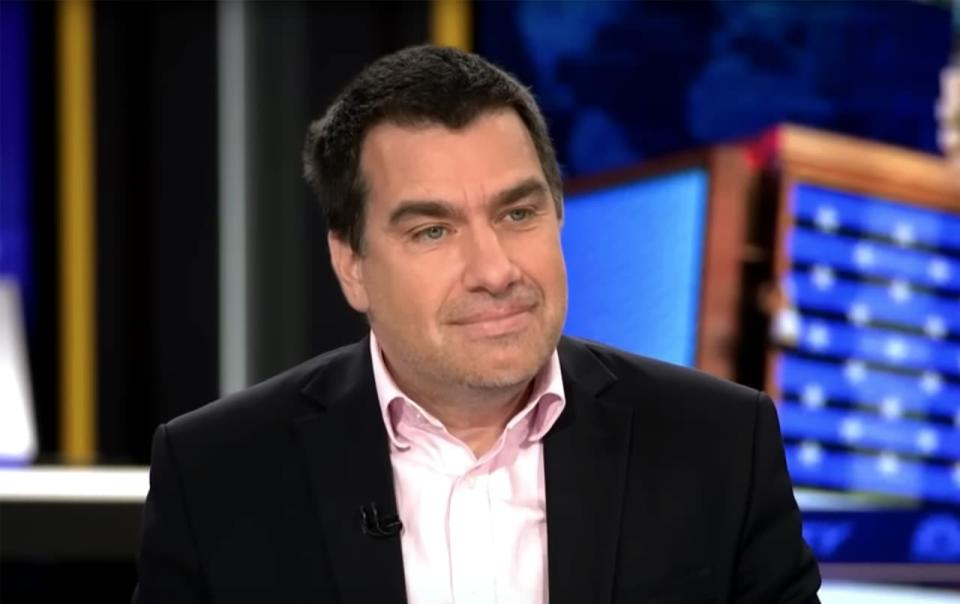
Wall Street’s biggest bear is heading for the door.
Chief market strategist Marko Kolanovic is leaving JPMorgan Chase & Co. following a 19-year stretch with the bank, according to a person at the investment bank who shared details from two internal memos with MarketWatch on Wednesday.
Most Read from MarketWatch
Kolanovic’s exit was first reported by Bloomberg News.
According to one of the memos, which was sent to JPMorgan JPM staff by Claudia Jury and Scott Hamilton, global co-heads of sales and research at the bank, Kolanovic is leaving to explore other opportunities. Hussein Malik, formerly the co-head of global research alongside Kolanovic, will take over as the sole head of global research at the bank.
A second memo sent by Malik said that Dubravko Lakos-Bujas will become the bank’s new chief market strategist and lead its markets strategy group, which includes cross-asset, equity and macroeconomic research. Meanwhile, Steve Dulake and Nick Rosato will co-lead fundamental research, the newly branded team bringing credit and equity research under one leadership structure.
Kolanovic’s departure from the bank follows a two-year stretch of disappointing market calls that saw him remain bullish as stocks tumbled in 2022, only to turn bearish just as the market started to recover in the fourth quarter.
Since the start of 2024, Kolanovic has maintained a year-end S&P 500 target of 4,200, while many of his peers on Wall Street — including Michael Wilson of Morgan Stanley, who had previously held on to his own bearish forecast — have raised their targets to keep pace with a relentless rise in the index.
Kolanovic’s target was the lowest among major Wall Street banks by a considerable margin. According to analysts at Bespoke Investment Group, the next-lowest target is 5,200, or 1,000 points higher than JPMorgan’s.
The JPMorgan strategist reiterated his target only last week when his team published its second-half outlook. It is unclear whether the bank plans to revise its target following Kolanovic’s exit.
His replacement, Lakos-Bujas, has favored the large-cap growth names that have contributed an outsize share of the S&P 500’s advance over the past year. Although, Lakos-Bujas also has warned the bank’s clients recently that the index’s increasing dependence on megacap and momentum names could render it vulnerable to a pullback.
The S&P 500 SPX and Nasdaq Composite COMP were aiming for back-to-back record closes on Wednesday, according to FactSet data. A return to Kolanovic’s target would necessitate a selloff of nearly 25% between now and December.
Kolanovic’s bearish view on markets was rooted in the notion that the U.S. economy appeared headed for a recession as the highest interest rates in more than two decades looked to be finally taking their toll. He also viewed earnings expectations for U.S. stocks, particularly artificial-intelligence darlings like Nvidia Corp. NVDA, as unrealistically high.
Instead of recommending that clients buy highflying technology stocks, Kolanovic favored more defensive names, while also recommending that investors increase exposure to commodities like gold.
It is unclear whether Kolanovic’s bearish view had anything to do with his leaving the bank. A representative from JPMorgan Chase declined to comment when asked by MarketWatch.
It’s worth noting that earlier this year, Morgan Stanley’s MS Wilson left that bank’s global investment committee to focus on serving the bank’s institutional clients. Wilson raised his target, calling for the S&P 500 to hit 5,400 by June of next year, a few months later.
Kolanovic has been among a dwindling pool of bearish voices for professional investors to consider, although a couple remain. Peter Berezin, chief global strategist at Canada-based investment-research shop BCA Research, recently warned that the S&P 500 could fall to 3,750 by early next year as the U.S. slides into a recession.
See: Stocks will fall 30% as the U.S. economy heads for a painful recession, strategist says
And Barry Bannister, chief equity strategist at St. Louis-based Stifel, has said that a bubble in artificial-intelligence names could push the index to 6,000 by the end of this year, before it eventually deflates and takes stocks on a round-trip back to around 4,800, or about where the S&P 500 stood at the start of 2024.
Kolanovic didn’t respond to a request for comment from MarketWatch.
Most Read from MarketWatch
EMEA Tribune is not involved in this news article, it is taken from our partners and or from the News Agencies. Copyright and Credit go to the News Agencies, email news@emeatribune.com Follow our WhatsApp verified Channel





